#electric pianos vs digital pianos
Text
Electric Pianos vs Digital Pianos: What's the Difference?
youtube
In today’s article, we’re going to tackle one of the most commonly asked questions by piano shoppers; What are the differences between electric pianos vs digital pianos? Are they just the same thing? And which one should you be shopping for?
Read on and find out!
Electric vs Digital Pianos: Are They the Same Thing?
Let's start by dealing with these somewhat clumsy labels and provide some clarity. While both digital and electronic pianos use electricity, they're most definitely not the same thing.
If you're looking for a piano that runs on electricity these days, whether on Amazon or in a showroom, you're most certainly looking for a digital piano, not an electric piano, unless you’re specifically looking for a vintage instrument.
What is an Electric Piano?
Electric pianos, at least as we define them within the music business, refer to a piano which uses an analog electric component to pick up and/or amplify the sound generated by a string or some other kind of resonating metallic object.
An electric guitar is actually a perfect comparison, as we have a resonating string that interacts with a magnetic field which generates a wave shape in the electric current that can be subsequently amplified.
Anyone familiar with 1970s music in the Motown, R&B, or pop vein will undoubtedly be familiar with the classic sounds of various electric pianos such as Rhodes, Wurlitzer, and Yamaha.
Why Electric and not Digital?
What exactly makes a piano electric and not digital? Well, quite literally, the lack of digits. Even though electrons were flowing around, none of it was being turned into ones and zeroes. There wasn't a microprocessor to be found, which is one of the most basic requirements to call something a digital device.
Under this set of definitions, there aren't any electric pianos being manufactured or sold today with the way technology has evolved over the past several decades, with maybe a couple of exceptions in the synth realm.
That said, certain vintage electric pianos are coveted on the second-hand market for their unique timbre, even though manufacturers like Roland, Casio, Kawai, Nord stage pianos, and various VST companies all produce very convincing electric piano patches.
What is a Digital Piano?
88-Key Digital Piano
Digital pianos generate tone in one of three ways. The first is by replaying samples of a real instrument that's been digitally stored, and this covers the vast majority of mid to high-end digital pianos currently being produced.
The second method involves generating different pitches based on a single PCM shape, and this is similar to how general MIDI sounds work. This method is, of course, common with synthesizers.
The last method involves tone being generated in real-time through complex algorithms, and this method is called modelling, which is still relatively rare among digital keyboards.
Which one Should you Consider?
Now that we’ve clarified the differences between Electric and Digital pianos, which one should you be looking for? Unless you're a professional keyboard player or vintage instrument enthusiast, you are most certainly looking for a digital piano.
Digital pianos have dramatically improved in quality and come down in price over the last 10 years for much wider accessibility. And just within the last two or three years, many instruments, even in the entry-level $500 USD range from companies like Alesis and Korg, will provide a sufficient musical experience to take your first piano lessons on.
Digital Piano
Snapshot of the Digital Piano Market Today
The average price of a digital sold in 2020 is around $850 US or $1,100 Canadian with popular models like Yamaha digital pianos such as the Yamaha P125, Yamaha P45, and the YDP Arius and Clavinova series. Other best-selling models such as the Casio Privia PX and CDP series instruments also provide a stellar portable keyboard experience, and there are even arranger portable digital pianos available at this price point too.
Musical instruments in this price range are increasing offerings of modern technology such as Bluetooth Connectivity, quality hammer actions, believable sustain pedals, metronomes and various output jacks.
The best digital pianos in terms of quality range from $5,000-$15,000 USD, with some even featuring things like genuine acoustic grand and upright piano key actions with wooden keys and high-end speaker systems and amplifiers for exceptional piano sound.
Final Thoughts
We hope this article has helped clarify the differences between electric and digital pianos. As we’ve said, unless you’re specifically looking on the private market or with a vintage gear retailer, you’re almost 100% going to be looking at a digital piano.
The post Electric Pianos vs Digital Pianos: How Electric Pianos And Digital Pianos Differ? first appeared on Merriam Pianos
2359 Bristol Cir #200, Oakville, ON L6H 6P8
merriammusic.com
(905) 829-2020
#electric pianos vs digital pianos#digital pianos#keyboards#yamaha#casio#midi#roland#kawai#bluetooth
0 notes
Text
tracking nuthphop through music: ep 4 and 5
*warning that songs and timestamps may not be 100% accurate, i tried by best tho. also i tried to descirbe the emotions of some of the songs but im not great at naming emotions so sorry in advance*
Ep 4
first nuthphop scene where phop is streaming.
- (kenji-ooyy 2:00) at the beginning of ep 4 their first contact is nuth private messaging phop while he’s live, the music is digital and in my sleepy state i’ll describe it as uptempo rock guitars with a lil hip hop influence. it’s exciting and sits closer to dark than light.
-(couldnt find the track 2:50) we then change to just nuth and phop messaging and the music is this like quick pulsating suspense synth and kick drum that to me sounds a bit like a beating heart.
- (couldnt find the track 3:20) then it switches to a 4 on the floor disco edm type sound.
- (machine vs machine - dream cave 3:50) when nuths payment comes through we go to dark and heavy synth sounds to me it almost sounds like a battle scene.
- (inverted - hampus naeselius 5:03) when nuth gets blocked we go back to quick pulse beats that sound like it’s misc digital percussion with some haunting higher pitched synths pulsing in and out
Phop agreeing to film with nuth
- (32:23 drifting emotions howard harper-barnes) this song starts right after the keen and phop moment where they have to stop because keen refused to wear a condom, it plays during phops narration about sex work and ends when he checks a message from nuth [the "im so sad you blocked me" one]
- (34:26 ambivalent thoughts- magnus ringblom) their messaging convo is silent until nuth sends a deposit and phop starts seriously considering meeting up with him again. it’s a sentimental piano ballad.
Nuth on the phone with mystery guy (i suspect jason lee) aka my beloved invisible hand scene
- (couldn’t find the track 37:57) it’s silent as the camera zooms in on nuth looking at his bank account. then at his trophy/plaque. when he makes the decision to call to ask to sell drugs [for daddy jason lee??] again theirs a heartbeat like bass drum and various reverbed and echoy percussion sounds that come in and out
- (39:11 cry- johannes bornlôf) another sad piano song. this plays as nuth finishes the phone call. i think it’s interesting that we get sad piano ballads for the phop/nuthphop/nuth scenes because they don’t [typically] repeat songs despite choosing ones that sound very similar…
the filming
- (couldn’t find the track 48:22) phop arrives at the filming location to a hip hop drum beat.
- (colds- guß 48:50) this sorta upbeat while still being lowkey electro instrumental plays when nuth tells phop to relax and they begin to set up
- (49:25 feelin ma self- push n glide) during the test lines this more uptempo and confident beat plays, specifically when nuths camera changes from just filming phop to filming him is a sexual way? idk how i want to explain it but yeah the song changes when the camera nuth is holding changes the way it views phop. [sidenote hihats in this one lowkey hit, idk what the gun shot sounds doing here tho].
- (50:22 kenji- ooyy) then we have an upbeat synth and electric guitar based hip hop beat when nuth says he’ll start revealing the acts he wants phop to do and what he’ll pay for them. This is the same song they play during our very first nuthphop moment so its like full circle for them in terms of their journey this ep (i think this may represent the fact that they begin and end with nuth paying phop to perform on camera for him) [side note the beat drops when nuth says he’ll wear a condom]
- i will also mention a trap beat plays at the end of the ep but it plays over all the characters so i’m not really counting it as a nuthphop song
ep 5
nuth and phop are chilling high on the bacony with nuth teasing and recording phop.
- (30:35 kobicha- arden forest) a sad? low piano solo plays while nuth watches fondly as phop tries to lick his own elbow.
- (31:24 yoiyami- sayuri hayashi egnell) a different piano solo (brighter and a bit pluckier) plays as phop begins reading nuths new script. this song continues playing through the “people like us can’t make porn that gets seen as art or wins awards, ours only gets seen as obscene” scene. it stops when nuth starts looking sad and phop changes the subject to having to leave and go to work.
- (32:50 ambivalent thoughts- magnus ringblom) this is the song that played last ep when nuth asked phop to consider filming with him and sends a deposit. this starts playing as nuth carries phop out on his back and then as hes shaving him. it stops abruptly with a high pitched noise when phop refers to nuth as his client and nuth points out he can only pay with drugs and not cash. there’s not music playing as nuth asks phop not to leave him to go work.
- (34:15 scared of water - kikoru) this eerie string piece plays as nuth stares down at phop with the shaving blade in his hand, it continues throughout them kissing and the pan down to nants necklace on the floor
artsy nuthphop scene
- (45:40 yoiyami- sayuri hayashi egnell) [notice this played earlier] it begins during the convo where aob rejects puen and then carries into the scene where the camera is all shaky and nuth and phop are under a purplish spotlight in a room that is dark. as nuth says “im hallucinating i can hear his voice” phop suddenly appears next to him and says “im physically here” and the music stops abruptly. i will say because of where it played earlier in the ep this song feels like it represents nuths hopeless feelings.
- (46:49 i can’t find this song for shit yall im sorry like it’s making me insane i cannot find this fucking song) phop says “i miss you” and nuth says “me or the drugs?” when phop says “both” a new song starts and plays while they have sex it’s upbeat and with strings and digital percussion and have lyrics that give like love against the odds vibes or like love at the end of the world. this is while they have sex and theres also random shots of a field of grain? and cowboys hugging?
- (49:08 incomplete- gavin luke) after they wake up and are staring at eachother a new piano song plays it’s kinda sad not in a i’m sad way but in a feeling lowkey CALM calm is the word but also light
- (50:00 last level part 2- hey son) this song plays briefly when phop picks up and shows nuth the N necklace. and nuth has a flashback.
- (50:40 hope will prevail- ecobel) this piano part that leads into like edm ish lowkey beats plays when phop asks it he can keep the necklace to remind him of nuth. the beat drops when they kiss.
this was really interesting imo. like how in ep 4 they begin and end the ep with the same song, how when they're being honest about emotions and feelings they get piano ballads but they have different flavours, etc. im excited to do the next eps
ep 6
7 notes
·
View notes
Text
woubgh emotional over frontiers music again. watch me copy/paste a note i made about it at 12am a while ago
thinking about the significance of electric guitar in sonic music
sorry im with you always gets me emotional
the way that its an almost calm ? song focused mainly on the piano (which i associate with sage) and techo sounds with the guitar solo in the middle. thats where it gets me
i feel like sonics always been associated with electric guitar. even though it only started in the modern games
its just. something about it
one thing i like about how its used in frontiers is how it goes along with the theme of digital vs real. techno vs traditional instruments. but electric guitar is a really nice inbetween
its a traditional instrument yes. but the sound is amplified digitally. and mixed with everything else it sounds so cool. Especially in im with you. its a clash between the two sides but then rhe guitar comes in and it just. ouhg idk i gotta learn music theory or something to explain it
but yeah it carries over to one way dream too
it becomes the main focus of this one so its kinda everywhere but in the chorus theres this little flare it does in the background and something about that part just itches something in my brain it makes me so happy idk
but uh. yeah the range of emotion electric guitar can have is really fitting for sonic i think. like youve got one way dream and reach for the stars and we can. but then theres All The Titan Themes and those just. have a completely different energy to them
but THEN you get into acoustic guitar and sonic and the black knight. ouhdhfhhf the violin with it ...... ..
gonna stop here but yeah guitar cool 👍
WAIT NO also. the fact that the majority of the things i mentioned are linked to super sonic. all the intense songs are when he goes super. the energy both literally and metaphorically SPIKES and they just Fit the music always feels right
ok now im done
#excuse my tired ramblings i just think about this a lot#and ive had this note forever (since january) and i just. aughdb#rambles#enjoy. idk#sonic frontiers spoilers#this is what all my notes look like btw there are so many and yes theyre always this disorganized
25 notes
·
View notes
Text
Imagine the sheer amounts of insufferable music discourse in the witch communities.
Because, like, by definition, most all of the witches have ears more sensitive to sound frequencies than humans, so probably even the less talented vocalists still have perfect pitch in the human context.
What do they think of Electro? Dubstep? Hyperpop? Heavy metal? Psychadelic? Thrashcore? Do they relate to Hip Hop at all, and do they think some strains of it are easier to listen to than others?
Who do they think are the best instrumentalists? The best guitarist (and how do they feel about distortion-heavy electric guitar playing)? The best trumpet player? The best violinist? Is the piccolo anathema to them? Who makes the best pianos?
Do they loathe equal temperament with the fire of a burning sun? Are they perturbed by the Vocoder, Autotune, or Vocaloid? (We only see landlines in the show, not mobile phones.) Are the Loudness Wars an abomination? Is John Chowning a witch?
Are there deep unbridgeable feuds over opera style singing vs. R&B style belting vs. more nasal type practices in other cultures? Do they have conflicted feelings about the Gospel genre?
Is America's patriotic music still even remotely the same? What happened to John Philip Sousa in this world? 2x5, of course, featured Berlioz's Symphonie Fantastique as diegetic music, which premiered in 1830, so he was unaffected by historical divergence. Sousa's heyday was from the late 1880s through the 1920s. Meanwhile the melody of the Star Spangled Banner was a British song published in 1780, but was there a War of 1812, much less a Battle of Baltimore, for Francis Scott Key to write a poem about, and why would witches give a shit about it? Besides which, it wasn't even adopted until 1931, whereas Hail Columbia and My Country Tis Of Thee are late 1700s, and so more likely to be uninfluenced by historical divergence, given Alder's presence at the crossing of the Delaware River.
Imagine the sheer obnoxiousness of witch audiophiles debating speakers, microphones, sound systems (in theaters and in homes), headphones, amps, digital formats. (Conflicting information in show about the tech levels. On Fort Salem we mainly see vinyl players, but the Camarilla are doing advanced sound synthesis in S3, so.)
#motherland fort salem#category: tv#are witches bothered by dog whistles or ultrasonic pest repellers
3 notes
·
View notes
Text
Musical Instrument Reviews: Navigating the Harmony of Choices
In the world of music, the right instrument is not just a tool; it's a partner in the journey of creativity and expression. The quest for the perfect musical Instrument Reviews can be as complex as the art of music itself. With countless options available, from traditional acoustic instruments to modern digital gadgets, navigating through the sea of choices can feel overwhelming. This article aims to guide both novices and seasoned musicians through the process of selecting instruments that resonate with their artistic aspirations and practical needs.
Understanding Your Musical Goals
Before diving into the specifics of different instruments, it's crucial to reflect on your musical goals. Are you looking to master classical compositions, produce electronic music, or experiment with world music? Your objectives will significantly influence the type of instrument that best suits your needs. For instance, aspiring classical pianists will gravitate towards grand pianos or upright pianos, while electronic music producers might lean towards synthesizers and MIDI controllers.
Acoustic vs. Electronic Instruments
The debate between acoustic and electronic instruments is as old as the latter's existence. Acoustic instruments, such as violins, guitars, and pianos, offer a rich, authentic sound that has been cherished for centuries. They require physical techniques and nuances that can profoundly affect the music's expression. On the other hand, electronic instruments, including electric guitars, synthesizers, and digital pianos, provide versatility, convenience, and a wide array of sounds that can be manipulated in countless ways. Your choice will depend on the sound you are seeking and the convenience you desire during practice and performance.
Research and Reviews
Once you have a clear idea of the type of instrument you're interested in, the next step is research. Online forums, YouTube channels, and music blogs are invaluable resources where you can find detailed reviews and comparisons. Pay attention to reviews from professionals and experienced musicians who can provide insights into the instrument's playability, durability, and sound quality. However, remember that personal preference plays a significant role, and what works for one musician might not suit another.
Trying Instruments First-hand
While online reviews and recommendations are helpful, nothing beats the experience of trying an instrument yourself. Visit local music stores, where you can feel the instrument, hear its sound, and assess its build quality. Some stores even offer rental services, allowing you to test an instrument for an extended period before making a purchase decision.
Consideration for Beginners
For beginners, the priority should be on instruments that are user-friendly and offer a gentle learning curve. Look for instruments with a robust community of learners and accessible learning resources, such as online tutorials and lesson books. Additionally, consider the instrument's maintenance needs and whether you're ready to commit to its care.
For More Info:-
Musical Instruments
Music Education
1 note
·
View note
Text
Affordable Musical Instruments for Beginners

If you're a beginner looking to dive into the world of music, you'll be pleased to know that quality musical instruments are available at budget-friendly prices.
Affordable Musical Instruments for Beginners
In this article, we'll explore five affordable musical instruments suitable for beginners that offer excellent quality and value.
1. Acoustic Guitars
Acoustic guitars are popular among beginners for their versatility and accessibility. Here are two budget-friendly options:
- Yamaha FG700S: Yamaha's FG700S is known for its exceptional quality, warm tone, and comfortable playability. It's an excellent entry-level acoustic guitar.
- Fender FA-115: Fender's FA-115 offers a great balance of affordability and quality, providing a rich, resonant sound that's perfect for beginners.
2. Electric Guitars
If rock, pop, or blues is your preferred genre, consider an electric guitar. Here are two affordable choices:
- Squier Affinity Series Stratocaster: Squier, a subsidiary of Fender, produces the Affinity Series, offering the iconic Stratocaster style and sound at a budget-friendly price.
- Epiphone Les Paul Special II: Epiphone's Les Paul Special II is an affordable electric guitar that delivers a classic rock sound and style reminiscent of the legendary Gibson Les Paul.
3. Keyboards/Pianos
For those interested in piano or keyboard, there are cost-effective options:
- Yamaha PSR-E363: Yamaha's PSR-E363 is a versatile keyboard perfect for beginners. It offers a wide range of sounds and features at a reasonable price.
- Casio CDP-S100: The Casio CDP-S100 is an affordable digital piano that replicates the feel and sound of an acoustic piano while remaining budget-friendly.
4. Violins
Learning to play the violin can be a rewarding experience. Here are two budget-friendly options:
- Mendini MV300: The Mendini MV300 is a well-regarded budget violin, suitable for beginners, and it comes as a complete kit with essential accessories.
- Cecilio CVN-300: Cecilio offers affordable violins with good sound quality and playability, making them ideal for beginners.
5. Flutes
Flutes are known for their melodious sound, and you can find budget-friendly options:
- Yamaha YFL-222: Yamaha's YFL-222 is a top choice for beginners, offering a rich tone and reliable playability.
- Mendini Closed Hole C Flute: Mendini offers affordable flutes with closed holes, which can make learning easier for beginners.
Also Read: Digital vs. Acoustic Instruments: Pros and Cons
Conclusion
These budget-friendly instruments provide excellent quality and value, making them ideal choices for beginners eager to embark on their musical journey without breaking the bank. Whether you're interested in strumming a guitar, tickling the ivories on a keyboard, or creating beautiful melodies with a violin or flute, there's an affordable option waiting to help you discover the joy of making music.
0 notes
Text
Electric Pianos of 60s/70s
QUESTION
I'm interested in how electric pianos from the 1960's and 1970's make the sounds they make. I understand there were at least a couple of different approaches to the sound pipeline (e.g. Wurlitzer vs other brands), each presumably attempting to optimize for some combination of portability, affordability, and consistency of performance. Please outline the different ways electric pianos were commonly constructed to make sound in those days.
ANSWER
Sure, let's talk about the technology behind three of the most iconic electric pianos from the 1960s and 1970s: the Fender Rhodes, the Wurlitzer, and the Hohner Clavinet.
Fender Rhodes: This is one of the most iconic electric pianos, first released in the 1960s. Its sound is generated through a process called electromechanical transduction. When a key is pressed, it causes a hammer to strike a tine, similar to a tuning fork. This tine vibrates and its motion is picked up by an adjacent electromagnetic pickup, similar to those used on electric guitars. The electrical signal from the pickup is then amplified and sent to the speakers. This process results in a sound that is warm, bell-like, and can be altered with effects like reverb, phaser, or chorus.
Wurlitzer Electric Piano: The Wurlitzer electric piano, also known as the Wurly, uses a different mechanism for sound generation. Instead of using tines like the Fender Rhodes, it uses reeds. When a key is pressed, a hammer strikes a reed, causing it to vibrate. Like the Rhodes, this vibration is picked up by an electromagnetic pickup, amplified, and sent to the speakers. The Wurlitzer has a distinct sound that is often described as more "barky" or "bitey" compared to the Rhodes. The Wurlitzer's reeds are also susceptible to the player's touch, allowing for a more dynamic range of sound.
Hohner Clavinet: The Hohner Clavinet, famous for its role in funk music, works on a similar principle, but instead of tines or reeds, it uses strings. When a key is pressed, a "tangent" strikes the string, causing it to vibrate. This vibration is picked up by two sets of pickups - one near the bridge and one near the center of the string length. The Clavinet is unique because it allows the player to select different pickup combinations, similar to an electric guitar. This provides a wide range of tonal possibilities, from sharp and percussive to smooth and sustained.
Each of these electric pianos has a unique sound and character, which is why they are still beloved and used by musicians today, despite the advent of digital technology. They were all portable (for the time), affordable, and consistent in their performance, but each had its own unique tonal character that lent itself to different styles of music.
0 notes
Text
Casio vs Yamaha Keyboards: Which One is Best for You?
Casio vs Yamaha Keyboards: Which One is Best for You?
If you are in the market for an electric keyboard, it is most likely that Casio and Yamaha are the two top brands showing up in your search. Casio vs Yamaha keyboards, which one is best for you? In this article, we will make a head-to-head comparison and share our honest opinions.
Before we delve into the details, let’s talk about some basics related to keyboards and digital pianos. Normally we…

View On WordPress
0 notes
Text
Learning Music Log - Day 1:
I am someone that has never played an instrument, never been part of band, never even known how to start. For the past year I’ve been fascinated with Lo-Fi music, so I figured I’d try making some myself. Again, with no experience in anything myself, I figured I’d need some tools to make electronic music. An old friend of mine from high school had some songs signed and sold through Beatport, and I remember him using FL Studio at home. Just messing around with the tools was interesting to watch, but the interface and process always intimidated me.
Another artist I follow on my art blog, Artem Solop, is also big into making his own electronic music and beats. Although I do not know him personally, I have always liked his style. The unique thing about his method, is that he utilizes his Nintendo DS and Switch as instruments. Synths, Compressors, and Drum Machines have always intrigued me, but I could never tell one thing from the other, and here was this guy using them from his Nintendo consoles to make something sounds good. Cables routed from one system to another – how does he do it?
I figured I’d plunge in headfirst – well, as “headfirst” as I could while still adhering to baby steps…I know the hobby can be expensive if left unchecked.
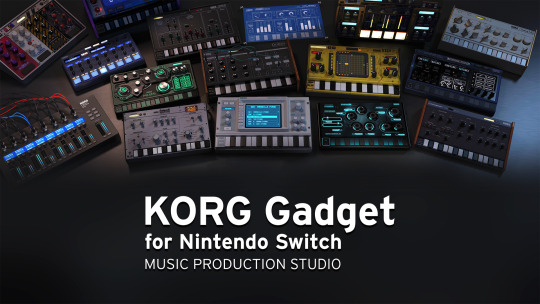
I bought KORG Gadget for Nintendo Switch about 2 weeks ago to start this journey – an inexpensive grab through Amazon for just 30$. I have no idea what it is, but it’s what Artem seems to use in his videos. The tool is described as such:
-Robust music composition/production tools in a compact cartridge
-Simple to use and easy to understand; anyone can create music anywhere and everywhere
-16 different synthesizer and drum machine gadgets with additional DLC gadgets available
-Gadgets have retro-inspired tactile control knobs that you can turn by rotating the Joy-Con controllers
And to be honest, it did not disappoint. It was a great way to wrap my mind around the synths, tracks, and “scenes” as they are laid out in the simple to use interface. I was determined to begin this journey in a self-taught, but organized manner. I had googled a few things before starting anything:
1. Simple music theory – I had no idea that notes/scales determine how well something sounds. A lot of you may think that that’s obvious, but again, my music knowledge started in 4th grade with a mandatory recorder recital and ended with the 5 colors on the guitar hero guitar. At the most basic level, I learned that scales could be set (C Major, A minor, etc.) and most tools used to create music (a digital audio workstation, or DAW for short) had a setting to allow “helpers” that would highlight keys in any given scale. From there on, I figured out that experimenting and playing randomly sounded better if I followed the scale guidelines.
2. How different chords on a piano/keyboard evoke different emotions depending on what scale you’re in. Major chord happy. Minor chord sad.
3. After talking to my fiancé (a former band geek that played flute!) I also learned that the concept of “chords” did not apply to the flute, so I also realized how different instruments were from one another…
Aside from those few things, I didn’t really look into anything else before attempting to ‘craft’ a song on the Switch.
Immediately, I could tell that the different synth gadgets varied and specialized in different things. The Marseille gadget had some great piano, electric piano, and orchestral instrument presets; the Helsinki gadget was great at ambient/relaxing sounds; the London drum gadget was great at…well…drum sounds and beats! Each of the city inspired gadgets brought something unique to the table. The Switch’s controls were intuitive. Copying and pasting, moving notes, playing tracks vs. just playing scenes was something that I was able to pick up in around 30 minutes without even ‘sniffing’ the user guide. By messing around I actually learned more about notes, half beats, and chord progressions all on my own.
Before I knew it, I had crafted a song that was about 3 minutes long. Deep, ambient intro, catchy simple melody, and the typical ‘lo-fi’ drums set to 79 BPM. I was impressed at how good it sounded. I knew there were things I was messing up, or could probably do better, but I was still proud of it.

Hopping on to YouTube I found a TON of tutorials covering music theory, lo-fi beat making lessons, “dos and don’ts”, best plugins for DAWs and more. Before long, I invested in an AKAI Professional MPK Mini Play USB MIDI Keyboard controller (hastily, as it seems like the Arturia Minilab might have been a better grab? Lmk), got set up with a subscription to Melodics HQ to learn the basics of playing a keyboard, and installed FL Studio on my computer. After a week of using the Korg Gadget on Switch, I found that FL Studio had a bunch of the same principals in its interface, and I found myself digging in with minimal research into how to use the tool.
By purchasing the Korg Gadgets online, I was able to continue using the same tools I was already familiar with on the Switch inside of FL Studio’s more robust interface.
I was able to recreate the song I made on the Switch in FL Studio. This was a great way to familiarize myself with the tool in an almost step-by-step tutorial I had already made for myself.
After I had gotten a grip with using FL Studio at a basic level, I decided to try mirroring some Lo-fi beat YouTube tutorial videos. To my surprise, I found myself not really liking the final product, even after following the instructor’s guidelines. I don’t think I am a fan of “oh you NEED to do this and this for it to be a good song”. I do think that a basic understanding of music theory is key before even starting, but I don’t know how I feel about new and upcoming musicians following strict rules about how something should sound when it’s literally an art form used for expression and fun.
I was happier with the first song I made just messing around on my Switch than the song I made trying to emulate a Lo-fi beat guided by a professional producer on YouTube… and it got me thinking…I think Giorgio Moroder was right in that one Daft Punk song:
“Once you free your mind about a concept of
Harmony and of music being correct
You can do whatever you want
So nobody told me what to do
And there was no preconception of what to do”
I’m looking forward to learning more – after all, it’s only been a few days!
-Franco
#music#learning music#daw#fl studio#korg#korg gadget#nintendo#nintendo switch#keyboard#midi keyboard#akai mpk mini play#melodics hq#blog#music blog#music log#day 1#learning#education#lofi#piano#vst#plugins
11 notes
·
View notes
Photo
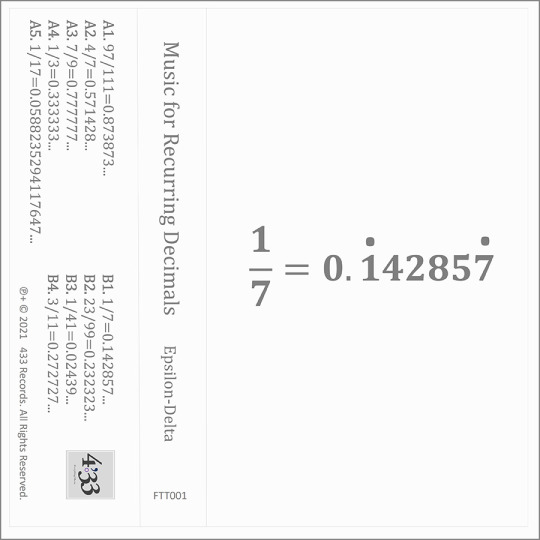

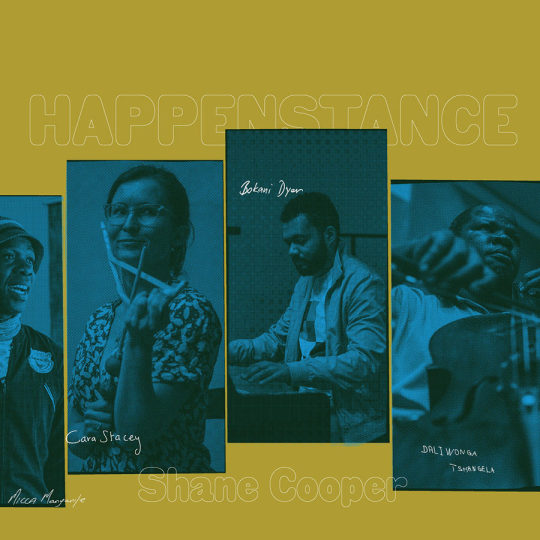

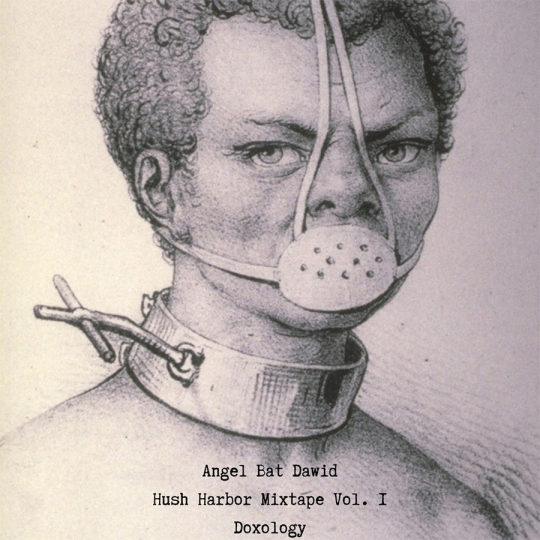

Music reviews by Laurent Fairon, July 2021
Epsilon-Delta – Music for Recurring Decimals (March 2021)
Dino Felipe – The Gardeners (June 2021)
Shane Cooper – Happenstance (June 2021)
RhaD – Metamusic (June 2021)
Angel Bat Dawid – Hush Harbor Mixtape Vol. 1 Doxology (June 2021)
Ron Nagorcka – Lovregana - Music From A Tasmanian Forest (July 2021)
Epsilon-Delta – Music for Recurring Decimals (433 Records)
https://433records.bandcamp.com/album/music-for-recurring-decimals
Lovely collection of short, poetic synth sequences build on simple mathematical algorithms by Hong Kong mathematician Addy Choi working under the Epsilon-Delta alias. Algorithms are based on decimal fractions like 4/7, 7/9 or 3/11, using the resulting digits as the basis for the sequence. Far from being arid or too cerebral, the tracks are poetic and varied thanks to the beautiful MIDI synth sounds chosen by the programmer, who is also a clever musician apparently. Tracks may be repetitive but the album isn't. This is textbook Systems Music as practiced in the U.K. during the 1980s by the likes of The Dead Goldfish Ensemble or The Lost Jockey. Exquisite album.
Dino Felipe – The Gardeners (self release)
https://dino-felipe.bandcamp.com/album/the-gardeners
Mini-LP of 16 very short tracks by Miami-based electronic musician with previous full length releases on ¡Mayday! and Schematic. The music on The Gardeners is based on samples, sound collages, occasional beats and various sound treatments like speed modification, sound stretching, accumulation, heavy reverb, or else. Felipe thus creates colorful and humorous vignettes based on ethnic music snippets, found vocals, musique concrète or cheap electronic sounds. Glitch-y textures abound, as well as grotesque sounds and weird juxtapositions, the music being deliciously direction-less and erratic.
Shane Cooper – Happenstance (Kit Records)
https://kitrecs.bandcamp.com/album/happenstance
Gorgeous ambient, ethnic and experimental jazz music by South African double bass player and multi-instrumentalist Shane Cooper. The album is actually constructed as a collage of short excerpts from sessions recorded with Johannesburg guest musicians in 2020. The whole project was commissioned by contemporary artist William Kentridge's The Centre for the Less Good Idea, an artist run facility he founded in Johannesburg to promote local independent art projects. Cooper obviously selected the interesting and relevant parts from two days' worth of collective improvisations and the 2 side-long tracks of Happenstance are bursting with ideas and surprises. The 1st side is rather varied in instrumentation, including superb piano and cello parts, lush Rhodes electric keyboard notes and incredible South African traditional instruments played by Cara Stacey. The music is moody and adventurous, jumping gracefully all over the place. The flip side is more about exploring rhythm textures and deep bass sounds and features Shane Cooper on double bass along 3 percussionists. The collage technique is applied here as well, producing pleasant mood changes and exciting U-turns. Cooper delivers a variety of sounds on his instrument, from walking bass lines to long-held notes played with arco (briefly played backward at some point), and also performs beautiful electric bass guitar parts with reverb. The non-linearity and unpredictability of the collage strategy used in Happenstance ensures the music is keeping away from jazz music's clichés and each new listen is surprising and interesting. Two more episodes were recorded during these sessions and are available on YouTube and other platforms, like the vocal only piece called 'Tongues'.
RhaD – Metamusic (Unexplained Sounds Group)
https://unexplainedsoundsgroup.bandcamp.com/album/metamusic
Standing for Research for Historical Audio Documents, RhaD is a musical project by Italian music activist Raffaele Pezzella, also known as electronic music producer Sonologyst, as well as Unexplained Sounds Group label director and publisher, not to mention radio host and sound researcher, among others. Metamusic is a 40mn sound collage of mysterious radio transmissions, found vocals, spoken words, vintage electronic sounds and a number of guest stars on classical music instruments like organ, guitar, bass or piano – respectively Michael Bonaventure, Stefan Schmidt, Daniel Barbiero, Francesco Arrighi and Mara Lepore. Adroitly avoiding any ca 2021 digital artifact along the way, Metamusic's sound design is bringing the listener back to the glorious 1960s and '70s, yet the music sounds rather timeless to these ears. Metamusic recreates the sound of early European avantgarde with plenty of tape manipulations, sound collages, buzzing sounds, French spoken word and contemporary classical music instruments. The sound crafting is superb, the collage technique creating an ever-changing musical soundscape full of weird sounds, grotesque sound manipulations and Surrealist juxtapositions. What's not to love?
Angel Bat Dawid – Hush Harbor Mixtape Vol. 1 Doxology (International Anthem)
https://intlanthem.bandcamp.com/album/hush-harbor-mixtape-vol-1-doxology
Very personal and original album by Angel Bat Dawid, a US clarinet player, singer, electronic musician and DJ from Chicago. Created with a few sounds and a minimum of means, devoid of spectacular solo outing, these mostly desolate tracks form a meditative musical travelogue through the Black people psyche. Track titles deal with themes of slavery, racism, and Black culture tropes, though neither the occasional lyrics nor the strange music on offer here can pass for angry or vindicatory, the music being far too personal for that. The clarinet confers a neo-classical atmosphere to some of the tracks, sometimes interestingly contrasted with synthesizer sounds or electronic beats. Harmonica and vocals on Autotune also contribute to the unique sound signature of this album, with occasional hints at gospel and rural blues. Playing in continuous mode in a kind of stream-of-consciousness style, the music would work just fine as a soundtrack to a Kara Walker exhibition—Bat Dawid actually composed the soundtrack to a Yoko Ono outdoor installation in 2020. On a side note, she also released the Harkening Etudes mini album on Longform Editions earlier in April 2021, where her classically-trained clarinet playing is contrasted with sampled piano accompaniment and electronically processed vocals in a series of short, bizarre classical music études, also worth checking out.
Ron Nagorcka – Lovregana - Music From A Tasmanian Forest (Invisibilia)
https://invisibilia.bandcamp.com/album/lovregana-music-from-a-tasmanian-forest-1990-soundscapes-from-wilderness-1988
This CD reissue combines 2 cassette tapes of manipulated field recordings by Australian composer Ron Nagorcka, born 1948, namely 'Lovregana - Music from a Tasmanian Forest', 1990, and 'Soundscapes from Wilderness', from 1988. Both are based on bird recordings from northern Tasmania island, where Nagorcka relocated in 1988, building himself a house and makeshift, solar-powered recording studio deep in the primeval forest. On Lovregana, short samples of bird songs are run through a sampler and harmonized in just intonation, producing eerie soundscapes of disembodied and supernatural bird singing. The music is reconstructing a fictional and artificial forest populated by dozens of birds, some far in the distance, some near ; some slowly developing a song, others performing in sudden bursts, with a variety and unpredictability akin to actual birds in nature. To this, Nagorcka adds minimal electronic loops in the background, dreamy synthesizer notes in strange tunings and discreet didgeridoo playing, all very well integrated to the sampled bird songs. These tracks are thus poetical evocations of a primeval forest via electronic sounds. While Lovregana's tracks more or less focused on one specific bird song at a time, the two tracks of 'Soundscapes from Wilderness' take a more holistic approach to nature recordings. The 1st track, 'Black Forest, Victoria', is a reconstruction of the deep forest sounds via the accumulation of various field recordings, creating a particularly dense soundscape through layers and layers of nature recordings. Here again, the natural-vs-artificial dichotomy is what interests the composer, and arguably this forest never existed, it was rather reconstructed in the studio. The 2nd track, 'Rainforest in Northern Tasmania', uses forest sounds as the basis for slow, mysterious didgeridoo improvisations, perhaps examining how the musician can dialog with the environment, being a part of it, being one with it. The superb didjeridoo playing is what fascinates most here.
. . .
11 notes
·
View notes
Text
Yamaha P45 vs Casio PX-160 | 88-Key Digital Piano Review & Comparison
youtube
Welcome to another piano review here at Merriam Music! In this article and accompanying video, we’ll be comparing two absolute titans of the entry-level market for 88-key digital pianos with weighted actions as we look at the Yamaha P45 vs Casio PX-160. We’ll be comparing the actions, sound engines, speaker systems, and peripheral features - everything you'll want to know about these instruments before making a decision.
Let’s kick off our discussion by focusing on sound engines.
Digital Piano Sound Comparison: Yamaha P45 vs Casio PX-160
Casio PX-160 Polyphony
The Yamaha P45 and Casio PX-160 are really well-matched when it comes to price, but when we take a closer look at the sound-related specs, it becomes immediately apparent that the PX-160 is delivering some exceptional value. Just look at the polyphony counts for example - there are 128 notes of polyphony over on the PX-160, whereas the P45 has half of that at 64 note polyphony.
Speakers
The same thing continues when it comes to the speakers - the P45 has dual 6-watt amps/speakers for 12 watts of power versus dual 8-watt speakers for 16 watts of amplifier power on the PX-160.
Sound Engine: AiR Sound System
Yamaha P45 Advanced Wave Memory Engine
For the price, it really is quite remarkable what Casio has brought to the table here in terms of sound quality with their AiR sound system. Since sound is a super personal and subjective thing, however, at this point we’d recommend checking out the video as Stu Harrison takes us through a playing comparison of both pianos’ default grand piano sounds.
In terms of the actual acoustic piano tone, both instruments are definitely bringing something satisfying to the table. If you demo both pianos with headphones (which we would recommend) you’ll notice that the PX-160 has a lot of air surrounding the sound, which maybe shouldn’t be a shock given the name of the sound engine.
This is a really great feature as it gives the player a sense of being in a larger room behind a real piano. The Yamaha P45 has a more simple tone courtesy of the Advanced Wave Memory engine (AWM stereo sampling), but it's still delivering a satisfying playing experience.
Yamaha has sampled their CFIIIS concert grand piano for the core piano sound, and while this piano has been replaced by the newer CFX concert grand, this is still a super high-end grand piano to be working from.
Additional Sounds
Beyond the core acoustic piano sounds, both pianos have some additional instrument sounds worth exploring, with 18 total sounds on the PX160, and the P45 has just over half as many with 10.
Even though there are only 10 sounds on the P45, all of the essentials are covered, such as some electric pianos, strings, organ, and harpsichord. The P-Series pianos always have nice electric piano sounds, and that holds true here.
The PX160 has all of the same types of sounds, plus several more given its larger count overall. The quality is high for the price points on both pianos in terms of the onboard voices, but the PX160 obviously gets an edge here due to the greater number of sounds. Both pianos offer some user control over the Reverb settings.
This sums up our discussion on sound. Let’s move on to action now.
Yamaha P45 vs Casio PX-160 | Piano Action Review and Comparison
Full-size, Weighted Keys, 88-key Keyboards
We certainly had some big differences in the sound systems of both pianos, but when it comes to the action, the differences become even more obvious, even if both pianos are using full-size, weighted keys, 88-key keyboards. This is apparent right away when you first play the PX-160’s Tri-Sensor Scaled Hammer Action Keyboard II due to some really dramatic textures on the white and black keys.
Yamaha P45 Graded Hammer Standard
The Yamaha P45 Graded Hammer Standard (GHS) action on the other hand doesn’t employ any type of texture on the white keys and instead features a glossy feel, with a matte finish on the black keys.
For the P45, this has been an area of criticism within the industry for a few years now, as the piano player’s fingers can slide on the keys in playing situations with higher humidity, which of course aren’t uncommon for portable digital pianos.
Casio Privia PX160 Tri-Sensor Scaled Hammer Action Keyboard II
Casio Advanced Triple Sensor Action
Neither action has escapement or let-off as it's sometimes known, and only the FP10 and its PHA4 action boast this particular feature in the price point. The Yamaha P45 action uses a dual-sensor which is typical for the price, but the PX160’s action features a more advanced triple sensor action meaning it has a greater capacity for touch sensitivity.
A beginner looking for an instrument for piano lessons won’t really feel a difference here, but an experienced musician looking for a good value practice or secondary instrument probably will, as will those looking for an accurate MIDI controller.
The weighting is good on both pianos, with the Yamaha feeling a little bit lighter.
As far as weighted action digital pianos go, both of these feel good overall for the price. Are you going to put either one on your wishlist if you’re looking to dive into advanced classical repertoire? No, but that’s not the point, and you’re probably not looking for a portable keyboard in that case anyway.
Yamaha P45 vs Casio PX-160 | Features/Connectivity Comparison
Both the PX-160 and the P45 have all of the basics covered when it comes to normal digital piano features. Both have a metronome, transpose, dual-mode (Layer), while the PX160 has Split mode, and the P45 has Duo mode.
USB-MIDI Connections: Yamaha P45 and Casio Privia PX-160
USB/MIDI Connectivity
There’s no built-in recorder on the P45 like there is on the PX160, but thanks to USB-MIDI connections both pianos are easily connectible to computers for recording anyway. The PX160 has discreet 1/4” line outputs which is a very nice bonus for the price point, while you’ll have to use the headphone jack on the P45 which isn’t ideal.
Keyboard Stand and Pedal System: Yamaha P45 vs Casio PX-160
Both pianos include a basic footswitch sustain pedal, though we recommend upgrading to a more substantial damper pedal. Also included with each are a power supply (power adapter) and a music rest.
Both are available with optional matching keyboard stands, while Casio also gives you the option of opting for a triple pedal system as well.
Casio PX-160 Keyboard Stand and Pedals
Final Thoughts
At the price both of these pianos are available, there aren’t too many other compelling options out there, aside from spending a little bit more and jumping to the Roland FP10 with its superior tone and touch (no triple pedal though!.)
Between the P45 and PX160, the PX160 definitely out-specs it on paper and makes a pretty compelling case for itself. That said, there are plenty of folks who will simply prefer the tone and touch of the P45 for their own personal reasons, not to mention the comfort that comes with selecting a Yamaha product.
Tough to find in stock, even on Amazon, but if you can, both are among the best digital pianos available in the entry-level class.
The post Yamaha P45 vs Casio PX-160 | 88-Key Digital Piano Review & Comparison first appeared on Merriam Pianos
2359 Bristol Cir #200, Oakville, ON L6H 6P8
merriammusic.com
(905) 829–2020
0 notes
Text
Year End 2018: Derek Taylor
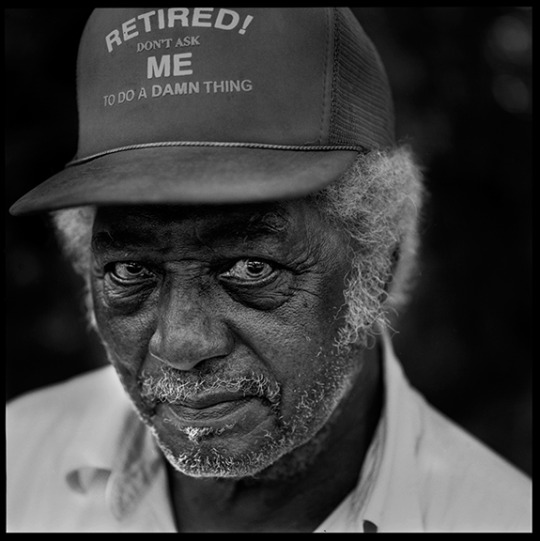
Another year above ground. Another year salvaged in no small part through the solace of music. That may register as a Limbo-worthy low bar for measuring life satisfaction, not mention one hopelessly awash in hyperbole, but there’s a reason. The sobering sense of normalcy that’s come to characterize the daily insanity of the world writ large and small makes the railing and grousing about it through a laptop keyboard feel at once futile and arrogant. Many of us still have it pretty good, if not better. Able to move and think freely. Fortunate to readily find the time to spend sequestered with art, whatever the senses and thoughts it stimulates. Plenty of others can’t consistently say the same. That ever-widening disparity weighs on my mind with a regularity that makes the compiling and commentary of lists such as this seem both a luxury and a necessity. We’re all in it together and revitalizing music is as meaningful a reminder as any of that steadfast reality. If only the orange orangutan still soiling the Oval Office and the psyches of millions (if not billions) would swap the MAGA-emblazoned nonsense that’s his usual headgear for the Burnside brim pictured above and mean it!
No real ranking to the entries below other than the general order to which they visited me through contemplation and return engagement.
Eric Dolphy – Musical Prophet: The Expanded 1963 New York Sessions (Resonance)

Released in haphazard, infrequent and incomplete editions, Eric Dolphy’s interstitial work (landing between his formative tenure at Prestige and his solitary masterpiece for Blue Note, Out to Lunch) under the aegis of producer Alan Douglas has never really received a fair shake from curators and critics alike. That long-standing slight was rectified this year with the Record Store Day release of Musical Prophet: The Expanded 1963 New York Sessions on the Resonance label. Rescued, enhanced and appended with 85-minutes of previously unreleased music and a lavish 100-page book stocked with scholarly essays by the likes of flautists James Newton and Nicole Mitchell, Sonnys Rollins and Simmons, Han Bennink, Henry Threadgill, Oliver Lake and others it’s an unprecedented boon on all fronts. The CD version of the set is slated for a 1/25 street date.
Barre Phillips
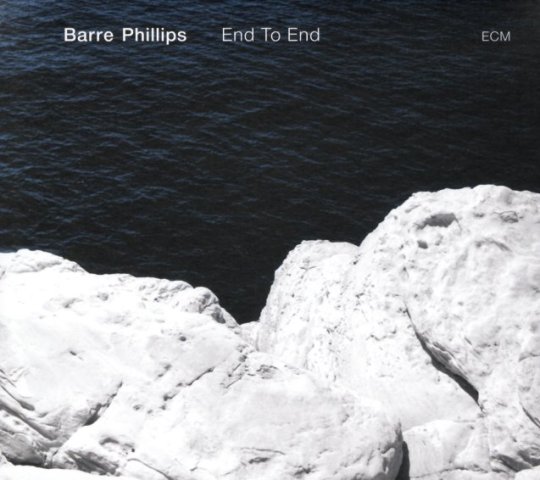
Octogenarian expatriate bassist Barre Phillips has sustained a relatively steady output in the 21st century, but End To End, a solo set (his purported last) for ECM, and a Oh My, Those Boys!, a timely reissue of his extended duets with Japanese confrere Motoharu Yoshizawa on the Lithuanian No Business label are aural confirmation of his consistency across decades. Alone and self-limited to the length of a LP he sculpts a somber soliloquy of intimate communion with his instrument. In the fast company of Yoshizawa, who fields a custom-made electric upright, the mood is much more frenetic in playful. Both settings are aurally transfixing.
Mingus – Jazz in Detroit/Strata Concert Gallery/46 Selden

Weighing in at a mighty five-discs, Jazz in Detroit/Strata Concert Gallery46 Selden dispenses with Christian name specifics and allows surname to suffice in announcing its bigger-than-life subject. Mingus’ instrumental faculties weren’t quite as consistent as the virtuosic powers that propelled him in youth (he had just over six years to live in the winter of 1974 when this material was captured), but any effects of advancing age fall away when he calls a tune, soloing with strength and at length and according his auspicious sidemen including drummer Roy Brooks who is ostensibly responsible for the recording’s survival. Retooled staples like “Pithecanthropus Erectus” and “Peggy’s Blue Skylight” join newer improvisational springboards like “The Man Who Never Sleeps” and “Noddin’ Ya Head Blues” to form a veritable smorgasbord of vibrant small group, stage-born jazz.
Peter Brötzmann

The venerable German road dog always has a place on this list. Now somewhat miraculously pushing eighty he’s still at it, crisscrossing the globe and breaking hearty musical bread with friends old and new. Three releases stood out to these ears: two recent duos and a welcome reissue of Hot Lotta, one of his early free jazz missives recorded almost five decades earlier with faithful countryman Kowald and the Finnish duo of Juhani Aaltonen and Edward Vesala. In the must-hear duo column reside, Ouroboros, a 2011 German club date with Chicago cellist Fred Lonberg-Holm on Astral Spirits, and Sparrow Nights on Trost, a wrenchingly intimate studio encounter with pedal steel phantasmagorist Heather Leigh, who ranks easily among Brötzmann’s most intriguing recent coconspirators.
Corbett vs. Dempsey

Keeping the Corbett vs. Dempsey count to just three for the year is a tough task as their usual prolificacy combined with a commensurate excellence. The reissue of Steve Lacy’s seminal Stamps, originally released in 1979 as his debut for the Swiss Hat Hut imprint narrowly edges out the equally edifying appearance of Milford Graves long-lost Bäbi if only because my spouse allows me to spin the cacophonously calorific latter platter only in her conspicuous absence. A decade was a long time to wait for Joe McPhee and Hamid Drake’s duo follow-up, Keep Going, this time trading stage for studio. But from the music to the mantra-ready title it’s a welcome inoculation against the forces of idiocy and ire globally arrayed against those with humanist allegiances.
Guy Lafitte

Last year it was Lucky Thompson. This year French tenorist Guy Lafitte got the Fresh Sound archival treatment with four full discs of material from his heyday as one of his country’s most popular indigenous purveyors of jazz. Each set delves into a different side of his folio from tight ensembles to modestly-sized orchestras, sometimes in the company of visiting guests, but more often plying his sound amongst a core crew of fellow believers. One of former, Michel de Villers, also earned a survey with The Complete Small Group Sessions 1949-1956 that shows him living up to the sobriquet of “Low Reed” at length on deftly deployed baritone saxophone.
Steeplechase
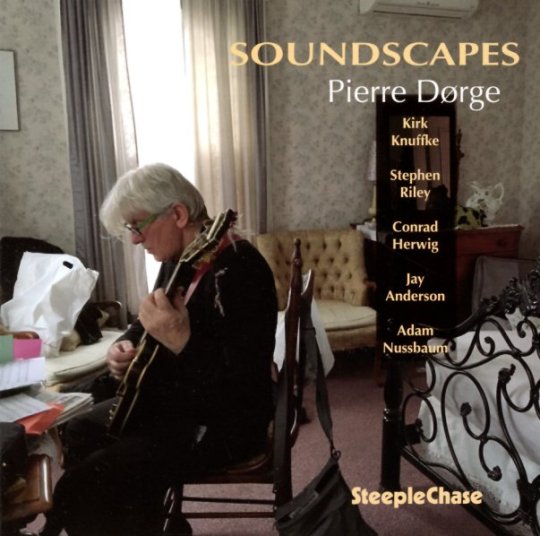
The Danish Steeplechase label always seems to slot in my yearly look back, mainly because of the consistency of both their roster and long-standing aesthetic. Sea changing surprises instigated by their records are exceedingly rare, but the odds of a stimulating listen are conversely high with virtually every release. Guitarist Pierre Dørge’s Soundscapes convenes a quintet with tenorist Stephen Riley and cornetist Kirk Knuffke in the service of the leader’s customarily open-ended compositions. Riley’s Hold ‘Em Joe is at once a canted tribute to Sonny Rollins and a welcome return to the piano-less trio format he first cut his teeth on for the label a decade ago. Baritonist Gary Smulyan’s Alternative Contrafacts yields winsome results with the instrumentation as well in a creative nod to the sort of extrapolations that were the fertile province of the Tristano School in the last century.
No Business/Chap Chap

A partnership between the No Business label and the Korean Chap Chap imprint continues to yield impressive reissues. All in circulation to date are worthy of consideration, but two bent my ears with pleasing consistency. Kang Tae Hwan’s Live at Café Amores offers an extended concert for solo saxophone that is equal measures Zen meditation and extended techniques master-class. Choi Sun Bae Quartet’s Arirang Fantasy teams a trio of Korean improvisers with visiting Japanese bassist Motoharu Yoshizawa for another café set that is ripe with cross-cultural creativity. Lastly, a reissue of sorely unsung vibraphonist Bobby Naughton’s 1976 masterstroke The Haunt with Leo Smith and the recently-deceased Perry Robinson (R.I.P.) in a setting of creative chamber jazz perfection.
Jimi Hendrix – Electric Ladyland 50th Anniversary (Sony)
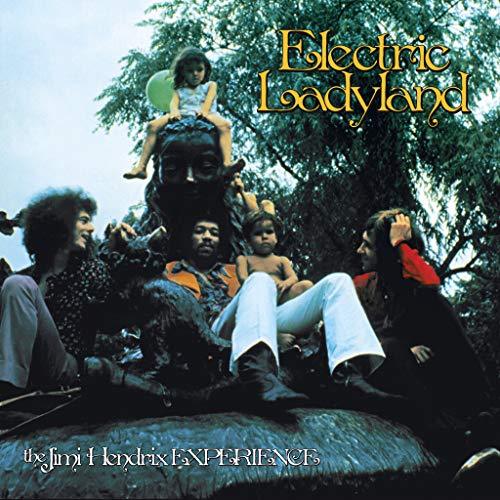
Repackaging of milestone rock albums is still the rage even as the compact disc as a physical musical format continues to wane with advance of other intangible digital formats. Hendrix has had his fair share of legacy parceled and promoted along these lines and it’s hard to fault the family for seeking to both cash-in and do right by his memory. Electric Ladyland 50th Anniversary does better than most past projects in this regard by hewing to a logical presentation and proffering some genuine value across three compact discs, a Blu-ray and a lavish LP-sized container replete hardcover tome covering all the minutiae of the original double-album phenomenon. And let’s face it, Hendrix fooling around with songs in their protean forms is more fun than sitting down with most rock musicians’ finished product.
Jack Sels – Minor Works (SDBAN)
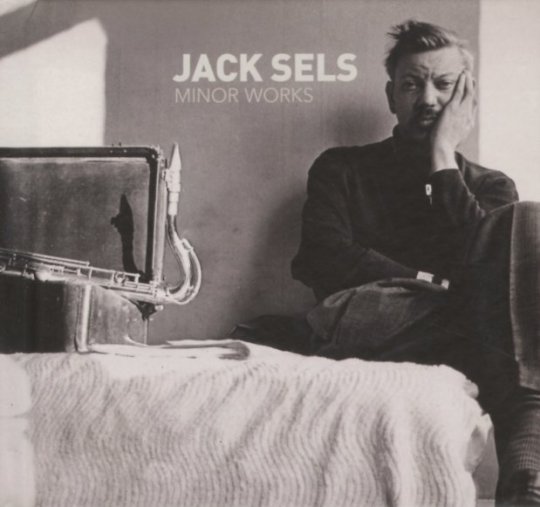
Parts of Belgian Jack Sels biography read like Hollywood-ready bohemian melodrama with riches, rags, tragedy and triumph all sewn into the story of a saxophonist who spent much of his life trying to capture the magic of his American idols while remaining fiercely true to his European roots. That latter decision explains his relative anonymity today, but the expertly-curated if humbly-titled Minor Works is practically bursting with recovered music and anecdotal context that frames a vivid portrait of a player well-deserving of posthumous consideration.
Jon Irabagon
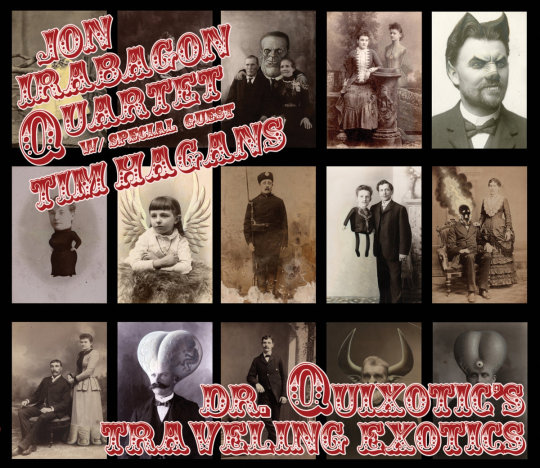
Irabagon’s a dues-payer, tireless and admirably selfless in his dedication to a revolving door of projects and regular gigs. A recent interview with clarinetist & podcaster Jeremiah Cymerman reveals just how cool and unflappable a customer the Filipino-American saxophonist can be as he relates exercising the patience of Job in the face of dunderheaded racism by erstwhile peers. On the aural front two specific contexts stuck with me as evidence of his indefatigability. Dr. Quixotic’s Traveling Exotics on his own Irabbagast imprint teams his quartet with veteran trumpeter Tim Hagans in a program that feels like a natural and more focused extension of earlier work in Mostly Other People Do the Killing. Dave Douglas’ Brazen Heart: Live at the Jazz Standard released on the trumpeter’s Greenleaf label explores one of Irabagon’s recurring sideman posts and at length over eight discs covering a four-night stand at the titular NYC club in 2015.
Roscoe Mitchell

Recent and nascent masterworks with nearly a half-century of revelatory activity between them, Ride the Wind (Nessa) and Sound (Delmark) represent two essential signposts in Roscoe Michell’s reliably iconoclastic career. Both center on the blurring the subjective boundaries between improvisation and composition. Whether adapting improvised solos to orchestral charts or atomizing ensemble interplay into a freeing malleable framework that can take participating musicians in a multiplicity of expressive directions, Mitchell’s courageous adherence to personal designs and investigations has always been the bedrock of his work.
Intakt
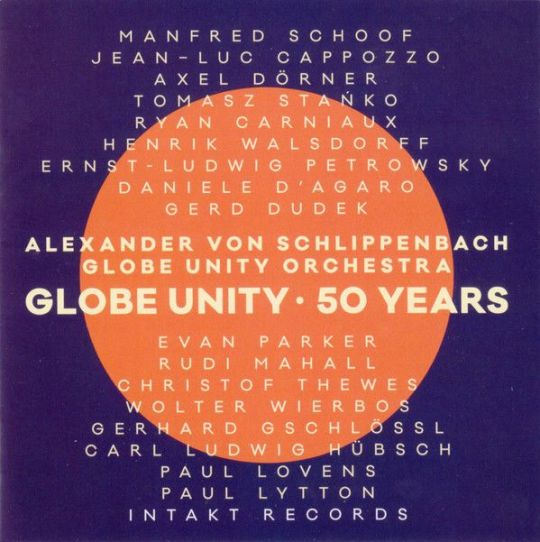
The Swiss Intakt imprint bridges the best aspects of a classic label construct (reliable stable, dependable production values, deep catalog, etc.) with a refreshing willingness to tweak the formula through a voracious ear for new talent. German altoist Angelica Niescer’s triumphant Berlin Concert and a pair of from Cuban pianist Auran Oritz, Live in Zurich with his working trio and Random Dances and (A)tonalities in the unexpected company of clarinetist Don Byron fit that latter bill. Globe Unity 50 Years celebrating the half-century longevity of Europe’s most influential improvising orchestra and Music for David Mossman by the equally indelible trio of Evan Parker, Barry Guy and Paul Lytton argue conclusively that the former end of Intakt’s endeavors is equally secure.
Clean Feed

Staunch loyalists to the tradition of improvisational album in physical form, Lisbon-based Clean Feed doesn’t just soldier on, it leads away with a release docket that reliably weds frequency with dependability. The sixteen discs that hit circulation in the span since January all have elements to recommend them, but two stuck to my ears and cranium more tenaciously than the others for both their audacity and intimacy. Vocalist Serpa’s Close Up is exactly that, a sans-net song forum with the stark support of Ingrid Laubrock’s saxophones and Erik Friedlander’s cello as the sum of sounding board. Similarly, trumpeter Susana Santos Silva’s All the Rivers situates her solitary horn in the unforgiving acoustics of the Panteão Nacional, a vast marble cathedral, for a recital rife with reverberating complexity.
Satoko Fuji – 12 for 60 Project
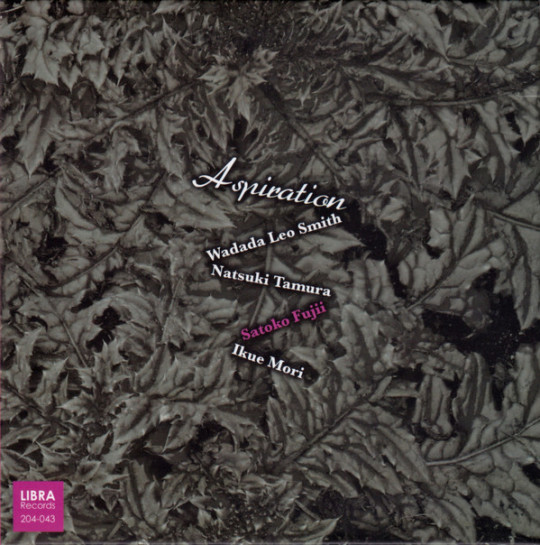
Year-long artist celebrations through output aren’t exactly common, but there’s certainly precedence (bassist Reuben Radding’s 12 in 2007 springs to mind). Already admirably prolific Japanese pianist Satoko Fuji decided to commemorate her 60th birthday on the planet by releasing a dozen albums on the Libra label over the course of the annum. As with her back catalog, many of them featured her kindred spirit Natsuki Tamura on trumpet as well as ensembles both familiar and freshly-minted. I’m still digesting the series in sum, but the standout so far is Aspiration, the core duo’s conclave with Wadada Leo Smith and electronicst Ikue Mori. Fuji has an admitted tendency to crowd the market and numb the senses with her productivity, but the focus and unity guiding these releases sets them apart.
Voices of Mississippi: Artists and Musicians Documented by William Ferris

In common with the intimation of its name, Dust to Digital is a label that takes its time in the laudable work of producing archival music collections that stand instantly apart in terms of quality, scope and expertly-examined context. Voices of Mississippi: Artists and Musicians Documented by William Ferris is a work of art from the packaging to the sounds (and sights) contained within. Incisively indexed into three categories (Blues, Gospel & Folk), the field recordings are immersive and often carry the mesmerizing magic of incantations. A fourth disc containing a DVD collection of Ferris’ hand-shot films evokes time, place and person even more vividly. Temporary antidotes to slowly normalizing nightmare we find ourselves in as a world abound on this list, but this the one I have probably returned to most since my first encounter. It’s that transportive.
V/A – Technicolor Paradise: Rhum Rhapsodies & Other Delights

Exotica was originally indicative a certain slice of commercial music expression, one inextricably entangled in associative issues of appropriation, exploitation and in many cases mollification of indigenous cultural capital. Sometimes it was a complete recontextualization entirely as Numero Group’s Technicolor Paradise explores over three discs and an associative booklet brimming with commentary. This sort of deep crate project is nothing new for the label, but it is gratifying to see them go at it with such gusto after an earlier and unexpected embrace by the label honchos of streaming as a means of revenue. Some selections tip irrevocably into bromidic kitsch, but the first disc especially, which focuses on guitar bands keeps a more even keel of interest.
Charlie McCoy – Real McCoy/Charlie McCoy/Good Time Charlie/Fastest Harp in the South
Jerry Reed – Jerry Reed Explores Guitar Country/Cookin’/Georgia Sunshine/Me & Jerry (w/ Chet Atkins)
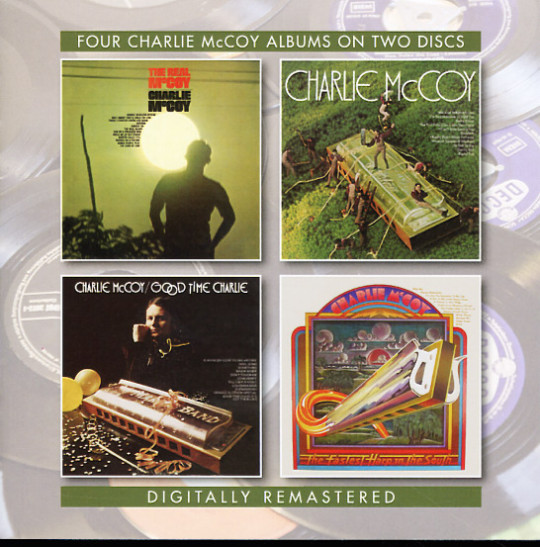
Time was when a two-fer reissue was a common currency in the compact disc market place. BGO’s done that erstwhile staple two better maintaining a fearsome foursome reissue program. Sets by country mouth harp maestro Charlie McCoy and good old boy-turned-ace guitar picker-turned-movie star Jerry Reed. Both are dipped liberally in countrypolitan production values that only occasionally slide over into schmaltz and McCoy wisely avoids vocals in favor of instrumentals that often sound like they could serve as soundtrack snippets to The Rockford Files (not a bad thing). Reed by contrast had a decent set up pipes to complement his strings-slinging skills and the chutzpah to try his hand at dry humor like the hilariously off-the-cuff ode to inconsolable nicotine addiction, “Another Puff.”
V/A – The Beginning of the End: The Existential Psychodrama in Country Music 1956 to 1972 (Omni)
V/A – Hillbillies in Hell: Country Music’s Tormented Testament (1952-1974) – The Resurrection (Omni)
V/A – Hillbillies in Hell: Country Music’s Tormented Testament (1952-1974) – The Rapture (Omni)

After an unexplained although far from unnoticed hiatus several years ago, the Omni Recording Corporation out of Australia roared back to life with renewed reissue campaign. The schedule of new projects eschewed full album(s) + plus bonus tracks for keenly curated collections focusing on the wilder and more tortured sides of the vintage country and country/pop spectrum. The Beginning of the End details descents into madness committed to song while two volumes more of the ongoing Hillbillies in Hell series doubled the entries to date describing that region of idiom(s) devoted to Beelzebub and his myriad earthly incarnations. All three are archly edifying as they are fun.
Sun Ra
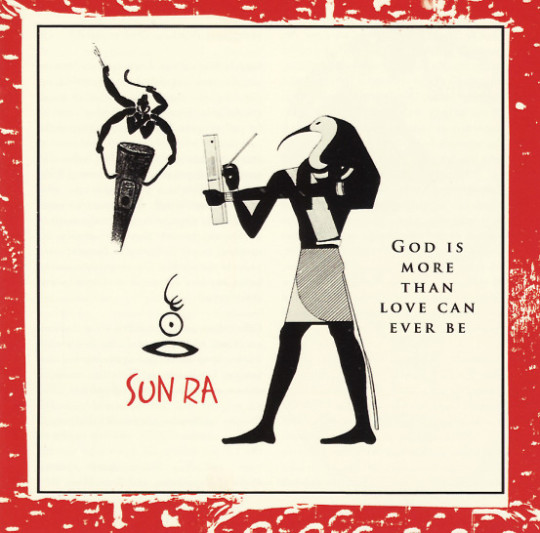
Sun Ra reissues are once again a semi-regularity now thanks to reissue operators like Modern Harmonic and Cosmic Myth, both of which have conscripted longtime Ra repository Michael D. Anderson in their noble endeavors. Cymbals/Symbol Sessions: New York 1973 covers ground previously mapped by an earlier set on the Evidence label pairing worthy material including the (16:33) John Gilmore tenor <I<tour de force “Thoughts Under a Dark Blue Light.” God is More Than Love Can Ever Be has singular status as the solitary piano, bass and drums trio album in the entirely of Ra’s omniversal oeuvre and largely lives up to the stated promise of that proposition.
25 more in no fixed order...
Tyshawn Sorey – Pillars (Pi)
Henry Threadgill – Dirt… And More Dirt (Pi)
Peter Kuhn Trio – Intention (FMR)
Dave Holland – Uncharted Territories (Dare2)
Devin Gray – Dirigo Rataplan II (Rataplan)
John Coltrane - Both Directions at Once: The Lost Album (Impulse!)
JD Allen – Love Stone (Savant)
Fay Victor’s SoundNoiseFunk – Wet Robots (ESP-Disk)
A Pride of Lions – The Bridge Sessions 8
Michael Adkins – Flaneur (hatOLOGY)
Houston Person & Ron Carter – Remember Love (HighNote)
Spontaneous Music Ensemble – Karyobin (Emanem)
Cecil Taylor – Poschiavo (Black Sun)
Paul Rutherford – In Backwards Times (Emanem)
Mike Westbrook Concert Band – The Last Night at the Old Place (Cadillac)
Ustad Zia Mohiuddin Dagar – Raga Yaman & Ragas Abhogi & Vardhani (Ideologic Organ)
Kitsos Harisiadis – Lament in a Deep Style: 1929 to 1931 (Third Man)
Asnakech Worku – Asnakech (Awesome Tapes from Africa)
V/A – African Scream Contest 2 (Analog Africa)
Mulatu – Afro-Latin Soul (Worthy/Strut)
V/A – Listen All Around: The Golden Age of Central & East African Music (Dust to Digital)
V/A – Ocora – Le Monde Des Musiques Traditionelles (Ocora)
V/A – Music City Blues & Rhythm (Ace)
Professor Harold Boggs – Lord Give Me Strength: Early Recordings 1952-1964 (Nashboro/Gospel Friend)
Yuri Morozov – Strange Angels: Experimental & Electronic Music (Buried Treasure)
#dusted magazine#yearend 2018#derek taylor#eric dolphy#barre phillips#charles mingus#peter brotzmann#corbett vs. dempsey#guy lafitte#steeplechase#no business#chap chap#jimi hendrix#jack sels#jon irabagon#roscoe mitchell#intakt#clean feed#Satoko Fuji#voices of mississippi#technicolor paradise#charlie mccoy#jerry reed#the beginning of the end#hillbillies in hell#sun ra
5 notes
·
View notes
Photo

If we're looking at digital pianos vs. stage pianos; they're commercially within the identical category; however, the more wide phrase digital piano' might not necessarily explain the arena consumption of its as well as application. We've numerous different routes to go when it comes to participating in secrets, whether it's MIDI keyboards with VST plugins or perhaps synthesizers plus more, phase pianos are available in for a certain area of expertise - an electric computer keyboard that tries it's better to emulate a real, acoustic piano - regardless of whether it relates to the sense of the secrets completely down on the warm sound we are everything inside like with. On top of this, they're also made for that particular setting - your stage performance!
The LP380 is built similar to an erect piano but with a low profile design that does not use up area that is a lot of . In spite of this specific minimal profile structure, it still squeezes with the eighty eight standard keys of an acoustic piano. These secrets are hammer weighted to feel as if a genuine acoustic piano. The LP380 improves on the functionality of its by adding 30 sounds that additional grow the player's options. It enables two audio to become played alongside one another and also for the keyboard to be split. This allows the professional to play a single sound around the lower conclusion of the keyboard as well as an additional sound on the top of conclusion. For much more on best digital piano I recommend you are doing your research.
Unfortunately, since acoustic pianos are rather complicated strictly in nature, there's an away probability that you will have to perform different fixes eventually. Needless to tell you, digital pianos do not need any of the measures we pointed out previously. Provided that you wear them correctly & have them fully clean, you will not need to do a great deal of phrases of maintenance. Last but not least, we've usefulness. Digital pianos can not just mirror the sound quality of an acoustic piano, although they can do so much more. You will find models which come along with a variety of presets, with quantities generally in hundreds. On top of that, there's likewise the aspect of connectivity. Based on the model associated with a digital piano, you are focusing on anything at all from numerous USB ports to MIDI compatibility. This lets you link your electronic piano to a whole array of many other devices. It's obvious that acoustic pianos do not have that kind of sort of versatility.
6 notes
·
View notes
Photo
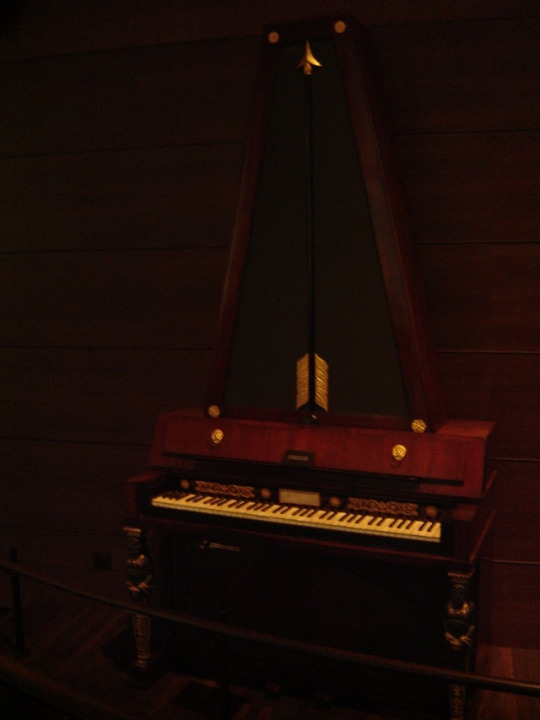
Fresh Listen - Ray Barbee, Tiara for Computer (Um Yeah Arts, 2018)
(Some pieces of recorded music operate more like organisms than records. They live, they breathe, they reproduce. Fresh Listen is a periodic review of recently and not so recently released albums that crawl among us like radioactive spiders, gifting us with superpowers from their stingers.)
Around Christmas-time 2018, my good friend Nathan invited us to a shindig at the Hawai'i Bowl, a post-season exhibition game at the Aloha Stadium, UH vs. LA Tech. Pregame was an all-you-can-eat/drink “tailgate.” Over-salted and overheated meatballs and short ribs, prepared frozen food from institutional distributors, served alongside twelve-ounce Coors Light or Heineken. The kind of party more fun in the abstract--in real time, you inevitably get sucked under a sluggish and dehydrated day drunk, and no quantity of soggy tater tots can pull you out.
As soon as we took our seats under a canopy set up just beyond the parking lot and in front of the entrance to the stadium, we realized conversation would be impossible. The band, a nameless cover group that interspersed Christmas tunes with their catalog of oldies, was too loud, and we had no choice but to drink silently and listen resentfully. The lead guitarist, hamming it up in an a Santa hat, was for the most part terrible and tried to compensate with a series of funny faces to the audience. (Granted, there were a few lines and riffs he had somehow motivated himself to practice to an almost polish). My girlfriend Rachel, who hears music with a far more sophisticated ear than I ever will, thought the drummer was “dragging” in most of the songs, but I just attributed his playing as part of the overall mess. Eventually the band gave over to the bass player, a thin white dude in an Aloha shirt, and he shocked all of us by manifesting not only the note-perfect bottom end but also the soulful vocal stylings of Motown’s greatest hits. But the true revelation of this performance was the keyboard player.
Nathan described her voice as Dionne Warwick at the Apollo, the sound of a class act singing her way back to the roughest definitions of her soul. While the keyboardist did have the coffee and cream smoothness of Dionne, she also carried in that voice a swallow of grit on the back end. It was a voice with some miles on it, a voice that had sung the story of heartbreak so often it could open up that valve to the universal pain in the speaking of a vowel, a syllable. This wasn't just the voice of God--it was undeniably human, the voice of desire and desperation and exultation.
But not just her voice that surprised and moved us--it was her mastery of her keyboard, a general issue piece of equipment, a preset memory bank of synthesized sounds. She could power her way through piano chords on covers of Adele, she could color the bass player’s R’n’B aspirations with bursts of faux horns. And when she needed to emotional immediacy of a note bend, a twang, that offset cry that simulates the human voice coming to grips with great feeling, the fingers of her left hand caressed the synth’s pitch shifter, modulating the artificial tones toward something that came close to natural. As fake and insufferable as they are in other cover groups, this specific keyboard transformed the liabilities of this imperfect band into strengths.
Because of the perceived dangers of displacing otherwise capable musicians, electronic synthesizers were surprisingly slow to be incorporated into popular music. The earliest recordings of synth music were put to tape by avant grade composers and theorists. For the most part failing to re-conceptualize the parameters as a whole new different conglomeration of sounds, these musicians took it upon themselves to recreate classic pieces of music through programming and note translation. (Their radioactive experiments, which pulsate and glow with the impossibility of ever striking a listener to the emotional core, are nonetheless compelling, unlistenable gems, evolving later into the computer program that stiltedly regurgitated an idealized, dehumanized melody, the theory of which was data-entried into its memory banks).
Kraftwerk pushed toward pop music as a synthesizer ensemble, but a true human face was not added to the cold, detached robotic visage until artists like David Bowie or Donna Summer coopted the German aesthetic for their Berlin and disco records. Stevie Wonder, perhaps because of his universal acclaim as a songwriter, vocalist, and instrumentalist, doesn’t receive enough credit as an electronic music pioneer, though he was utilizing synthesizer technology as early as 1972′s Music of My Mind. Over layers of weirdly chorded synths (all of them played himself), Wonder inserted a soul into the music, with his pure, flawed voice. With his inimitable, low-key drum style, he imparted a living heartbeat.
Ray Barbee’s Tiara for Computer references the trading away of old wealth for new knowledge. Specifically, an ornate but inherent useless crown-petite for the technological advantage of digital processing. As we as peoples evolve, we are learning how important it is to be plugged into the resources available via great swathes of digitized information, and progress itself is now dependent on effectively utilizing this digitized information. To evolve nowadays, to simply grow, is to synthesize the mind with the databases we move between daily. At least, that’s what we’ve convinced ourselves of.
With the help of Tortoise percussionist John Herndon, Barbee carries forward Stevie Wonder’s aesthetic, though without vocals: synth layers with a live backbeat. If there is one drawback to this approach, it’s that Tiara for Computer comes close to sounding like a Tortoise record, minus the off-kilter timing and overly cerebral melodies. Like his skater-musician colleague Tommy Guerrero, who appears on Tiara for Computer through his handclaps, Barbee’s musical drive is based on setting minimal and insanely catching melodies--through riffs and repeated lines--in stone. There are, for the most part, beginnings, middles, and ends to his songs, and on this record, aside from a few exceptions, Barbee doesn’t waste his time with free-floating beeps and tones, those textures that rise to the surface on the periphery of Radiohead records.
A fluctuating drone kicks off “Pink Noise,” an electro-alarm that announces the sonic equivalent of of a video game race over translucent tracks refracting pixels of light into rainbow prisms under the air wheels of futuristic machines. A bass synth figure keeps the track moving briskly along, subtly propelled by a tightly strummed electric guitar creating the impression of velocity. First buried low in the track, the guitar bursts into a shower of sparks as the song makes its last sprint around the length of space circling our heads.
There will come a time when the guitars and pianos and violins and saxophones of our present will exist as mere artifacts, like reproductions of lutes from Ancient Greece. The expression of the infinite well of human feeling will be predicated on the communication through a digitized language, absorbed through synapses that have evolved adequately for these missives to hit their mark. “Future Blues” is is Barbee’s rough sketch at what this music will sound like, discovering in the programmed notes of electronic keyboards a means to delicately portray he desolation of the human condition. The song could almost be a sketch from the outtakes of Kid A, grappling with it does the undead cry of technology in a struggle to capture a living sentiment.
“What’s His Neck” continues the exuberance of “Pink Noise,” a more melodically sophisticated piece accented by Barbee’s guitar and a chorus of handclaps. The fullest “band” song on he record, the song accelerates to a rave-like intensity. In contrast, “Ocra vs. Jaba” comes across as almost sanctimonious. Despite the complicated drum figure and Barbee’s groove-based riff, the overwhelming synths drag the song into a kind of slow motion, a ponderous moment that creates in the imagination a starship docking on the interior of a space station.
Herndon has several shining moments on Tiara for Computer, but his impact is never so apparent as on “Tina Cut.” As a drummer, his role in the song is minimal, tasked to ground Barbee’s sequenced movements with a steady beat that could never be replicated by a computer. The slight accents that vary between the snare, hi-hat, bass drum, and cymbals--plus the breathless manner in which Herndon pushes the sonic monolith of synths through a kind of weightless space--comes as close to a credible synthesis between electronic and live instruments. The sequel to “Tina Cut,” Ornithology,” replaces that living rhythm with a more mechanized beat, capturing Barbee’s thinking out loud through his synths.
“Holding Company,” with its processed acoustic guitar arpeggios and slacker groove, calls back to Tommy Guerrero’s laid back aesthetic, with a little of Oliver Nelson’s “Skull Session” thrown in. Barbee forsakes his firmly established melodies on the album’s title track, a tightly orchestrated freakout that, if stripped of its electricity and played by horns, could be the outro of a jazz record, notes arising and from the noise and latching onto one another briefly before traveling astray.
With its hybridization of live and electronic instruments, Tiara for Computer might have been produced ten, fifteen years ago. It is not a groundbreaking record in the sense of reshaping the potentialities of this music. What is important about Tiara for Computer is Barbee’s excitement in engaging new modes of expression beyond his already formidable guitar work, while composing music that is, in its complex simplicity, quintessentially his own. Barbee is growing into the 21st Century, hypothesizing new ways of playing and hearing as he develops his aesthetic palette.
1 note
·
View note
Photo

If we are evaluating digital pianos vs. phase pianos; they're technically inside exactly the same category; however, the better broad expression digital piano' might not automatically show the environment consumption of its as well as program. We have several diverse routes to go when it comes to participating in tips, no matter if it is MIDI computer keyboard with VST plugins or perhaps synthesizers and much more, phase pianos come in for a certain area of expertise - an electronic keyboard that tries it is wise to copy a real, acoustic piano - regardless of whether it comes to the sense of the keys all the way down to the bright audio we are all in love with. In addition to this particular, they're likewise intended for which specific environment - your stage performance!
Atop key experience (which aside from cost is an obvious must for every pianist), the last factor to keep in mind can be your point pianos small characteristics built-in for the unit. A number of these have a pc inside which supplies additional functions you may or may not be may be worth a price hike. We are talking on instrument picker best electric piano concerning metronomes, FX (reverb, compression, resonance, etc.), microphone inputs, extra voices and audio (aside by a piano audio, like synths, MIDI connectivity, etc.), harpsichords, then more.
Getting the kids of yours enthusiastic about music is 1 of the greatest things you are able to do for them. If your kid is revealing interest in playing piano, you need to most likely start looking for a great established that could be worn both at home and also anywhere else. We've prepared a short menu of downloadable pianos that are appropriate for boys and girls. Probably the most affordable piano we are comfortable advocating will be the Williams Legato. A massive amount individuals purchased this particular as their kid's very first electronic piano platform. Needless to point out, it grew around recognition in the long run. The thing that makes the Legato so well respected is the simplicity of its and the reality it consists of all the primary features you would want. Legato is included with a number of different audio, a built in metronome and good enough connectivity to be used along with other equipment. In addition to that, it's quite convenient both due the sizing of its and the reality that it is able to focus on batteries. If you are on a tight budget, this may be the solution you are looking for.
3 notes
·
View notes
Photo

If we're comparing electronic pianos vs. stage pianos; they're technically within exactly the same category; however, the more wide expression digital piano' might not always explain its arena use and program. We've several different routes to go with regards to participating in tips, regardless of whether it is MIDI computer keyboard with VST plugins or synthesizers and more, stage pianos come in for a certain area of expertise - an electrical keyboard that attempts it is better to imitate a true, acoustic piano - regardless of whether it comes to the feel of the tips completely down to the bright sound we're just about all within like with. On top of this particular, they are also intended for which specific setting - your stage performance!
Digital pianos generally sound & truly feel good the days, but there's still lots to look at. For starters, of the living space, you want something which works within with its environment, isn't insanely heavy (if you choose to go it around), appears exact and also projects its sound nicely, and also does not have quite weighty a behavior, (particularly if kids are going to be playing/learning on it). The really good news? The best reviews are now on the web and you can generate an educated decision traveling to instrument picker. You also have to figure out no matter whether you are looking for only audio or audio with effects, auto backings & MIDI for practicing/playing along with as well. Here are some choices to help you decide!
Nicely listed, and more lightweight compared to much of the tournament, the Numa Concert boasts a Fatar hammer-action wood/weighted computer keyboard which seems ideal for piano and other onboard sounds. It has mod/assignable wheels and pitchbend for realtime sound efficiency, along with an intuitive and simple very interface with knobs for effect quantities and paper EQ. There is a very limited range of audio onboard, and so don't be expecting it to cover each and every sonic foundation you require, especially when it pertains to synth stuff. The Numa Concert Looks somewhat unexciting and possibly doesn't possess the kudos of more well-known models. Do not let that jot you off of, however, as this is a stage piano that has plenty to recommend about it.
2 notes
·
View notes